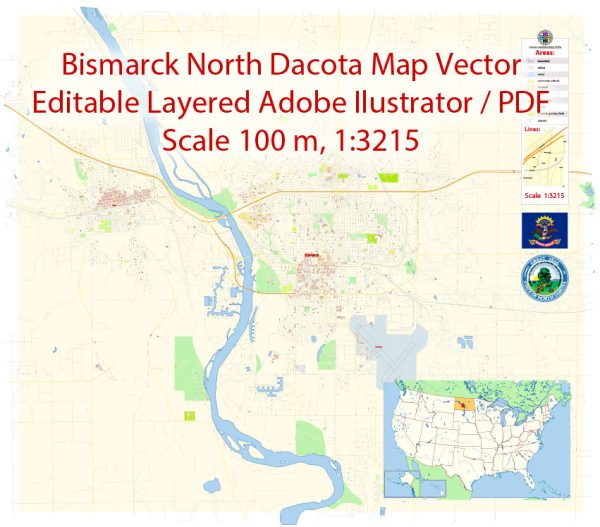Bismarck, North Dakota, has a rich history that is closely tied to the development of the American West and the growth of the United States. Here is a brief description of Bismarck’s history:
- Early Native American Inhabitants: Prior to European settlement, the area around Bismarck was inhabited by various Native American tribes, including the Mandan, Hidatsa, and Arikara peoples. These tribes lived along the Missouri River and engaged in agriculture, fishing, and trade.
- Lewis and Clark Expedition: In 1804-1806, the Lewis and Clark Expedition, commissioned by President Thomas Jefferson, passed through the region on their journey to explore the newly acquired Louisiana Purchase. They spent time near the confluence of the Missouri and Heart Rivers, which is near present-day Bismarck.
- Dakota Territory and the Railroad: Bismarck was officially founded in 1872, and it became the capital of the Dakota Territory. The Northern Pacific Railway reached the city in 1873, contributing to its growth and serving as a transportation hub.
- Statehood and Capital Status: North Dakota became a state in 1889, and Bismarck was chosen as the state capital. The city was named after Otto von Bismarck, the Chancellor of the German Empire, in hopes of attracting German investors to the region.
- Economic Development: Bismarck’s economy flourished due to its location on the Missouri River and its role as the state capital. It served as an important center for government, commerce, and transportation. Agriculture, particularly wheat farming, played a significant role in the city’s early economy.
- 20th Century: Bismarck continued to grow in the 20th century, with the expansion of government facilities and the development of infrastructure. The construction of the Garrison Dam on the Missouri River in the 1950s brought hydroelectric power and flood control to the region, further spurring economic development.
- Recent History: Bismarck has continued to develop as a regional hub for healthcare, education, and government services. The city is known for its high quality of life, outdoor recreational opportunities, and its role as a cultural and economic center in North Dakota.
- Landmarks and Culture: Bismarck is home to several historical landmarks and cultural attractions, including the North Dakota State Capitol, the North Dakota Heritage Center, and the Fort Abraham Lincoln State Park, which is home to On-A-Slant Village, a reconstructed Mandan Indian village. The city also hosts various events and festivals that celebrate its history and culture.
Bismarck’s history reflects the broader narrative of westward expansion in the United States, the influence of the railroad on development, and the enduring importance of government and agriculture in the region. Today, Bismarck remains a vital part of North Dakota’s cultural and economic landscape.


 Author: Kirill Shrayber, Ph.D.
Author: Kirill Shrayber, Ph.D.